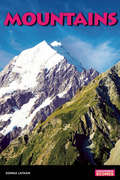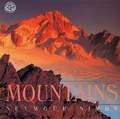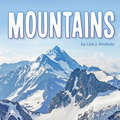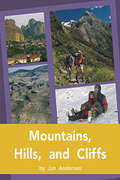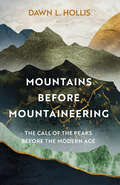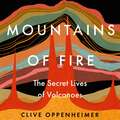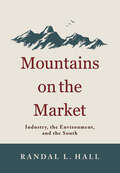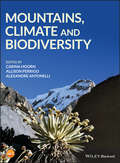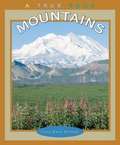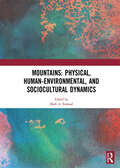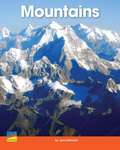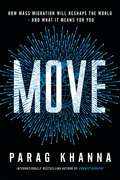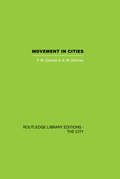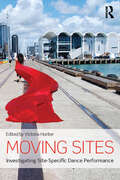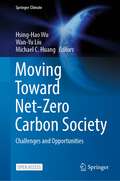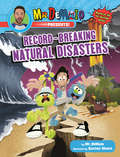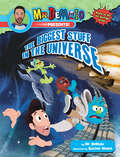- Table View
- List View
Mountains
by Donna LathamInvestigating a variety of biomes and today's natural and human threats to their preservation, this interactive series challenges young readers to look at how their own actions influence the planet's health. Four distinct environments are explored in detail, showcasing the assortment of plants and animals that inhabit these outdoor communities as well as how they have adapted to their surroundings. Offering fascinating facts on each ecosystem along with vocabulary-building sidebars, these guides show budding scientists how they can contribute towards ongoing conservation efforts. The majesty of the earth's alpine biome is captured in this guide that discusses threats such as acid rain, climate change, and habitat destruction, clearly depicting how these factors affect the world's mountains.
Mountains
by Seymour Simon"In the trademark Simon style, carefully selected color photos, drawings, and a clear and informative text tell the story of Earth's mountains: their formation, relative sizes, ecology, and influence on weather. . . . Simon may have done more than any other living author to help us understand and appreciate the beauty of our planet and our universe;
Mountains (Earth's Landforms)
by Lisa J. AmstutzLook up! All mountains rise high into the sky, but there is more to these landforms than meets the eye! Some form when two pieces of Earth's crust push up land. Erupting volcanoes form others. Some are growing, while others are shrinking. Give beginning readers all the need-to-know information about mountains, including their characteristics, how they form, and where they can be found around the world.
Mountains Hills and Cliffs (Rigby PM Plus Blue (Levels 9-11), Fountas & Pinnell Select Collections Grade 3 Level Q)
by Jan AndersonMountains, Hills, and Cliffs by Jan Anderson
Mountains before Mountaineering: The Call of the Peaks before the Modern Age
by Dawn L. HollisToday, mountains are spaces for adventure: treasured places for people to connect with nature, encounter the sublime and challenge themselves, whether it be skiing in the Italian Alps or scaling the heights of the Matterhorn in Switzerland. Some regard our love of mountains as relatively new, claiming that before modern mountaineers planted flags upon the peaks, the average European was more likely to revile and avoid a mountainous landscape than to admire it.Mountains Before Mountaineering tells a different narrative. It reveals the way mountains inspired curiosity and fascination and how they were enjoyed in sixteenth- and seventeenth-century Europe. It gives voice to the early modern travellers who climbed peaks and passes with fear and delight; to the ‘real mountaineers’ who lived and died upon the mountain slopes; and to the scientists who used mountains to try to understand the origins of the world.This book invites you on a journey through the mountains, long before Everest was ‘discovered’ as the highest mountain in the world or before the first recorded ascent of Mont Blanc. It is the story of how our love of the mountains has been a part of us from the very beginning.
Mountains of Fire: The Menace, Meaning, and Magic of Volcanoes
by Clive OppenheimerMeeting with volcanoes around the world, a volcanologist interprets their messages for humankind. In Mountains of Fire, Clive Oppenheimer invites readers to stand with him in the shadow of an active volcano. Whether he is scaling majestic summits, listening to hissing lava at the crater’s edge, or hunting for the far-flung ashes from Earth’s greatest eruptions, Oppenheimer is an ideal guide, offering readers the chance to tag along on the daring, seemingly-impossible journeys of a volcanologist. In his eventful career as a volcanologist and filmmaker, Oppenheimer has studied volcanoes around the world. He has worked with scientists in North Korea to study Mount Paektu, a volcano name sung in national anthems on both sides of the Demilitarized Zone. He has crossed the Sahara to reach the fabled Tiéroko volcano in the Tibesti Mountains of Chad. He spent months camped atop Antarctica’s most active volcano, Mount Erebus, to record the pulse of its lava lake. Mountains of Fire reveals how volcanic activity is entangled with our climate and environment, as well as our economy, politics, culture, and beliefs. These adventures and investigations make clear the dual purpose of volcanology—both to understand volcanoes for science’s sake and to serve the communities endangered and entranced by these mountains of fire.
Mountains of Fire: The Secret Lives of Volcanoes
by Clive OppenheimerA thrilling journey to the planet's most extreme places with volcanologist and filmmaker Professor Clive Oppenheimer, revealing how volcanoes have shaped us and our planet.Volcanoes mean more than threat and calamity. Like our parents, they've led whole lives before we get to know them. They have inspired our imaginations, provoked pioneering explorations and shaped the path of humanity.World-renowned volcanologist Clive Oppenheimer has worked at the crater's edge in the wildest places on Earth, from remote peaks in the Sahara to mystical mountains in North Korea. He's faced down AK47s, learned from tribal elders, and watched red hot rocks shoot into the sky. More people have been into space than have set eyes on the fiery depths of Mount Erebus in Antarctica, where he has measured the Earth's powerful forces. In Mountains of Fire, he paints volcanoes as otherworldly, magical places where our history is laid bare, and shows us just how entangled volcanic activity is with our climate, economy, politics, culture and beliefs.In a stunning blend of science, cultural history, myth and adventure, Mountains of Fire pulls out new lines of causation and correlation stretching around the globe, and reveals how deeply our stories are intertwined.(P) 2023 Hodder & Stoughton Limited
Mountains of Fire: The Secret Lives of Volcanoes
by Clive OppenheimerSHORTLISTED FOR THE BOARDMAN TASKER AWARD FOR MOUNTAIN LITERATURE'If Michael Palin had been a volcanologist, this is the book he would have written' LITERARY REVIEW'Gripping' THE ECONOMIST'Wonderful' PETER FRANKOPAN'Like a thriller ... This is terrific' SPECTATOR'Beautiful ... bursting with poetry, with storytelling' WERNER HERZOGWe are made of the same stuff as the breath and cinders of volcanoes. No matter where we live on the planet, they have shaped our history and might one day decide our destiny.World-famous volcanologist Clive Oppenheimer has worked at the crater's edge in the wildest places on Earth, close enough to feel the heat of the lava. In Mountains of Fire we join him on hair-singeing adventures from Italy to Antarctica to learn how deeply our stories are intertwined with volcanoes.
Mountains on the Market: Industry, the Environment, and the South (New Directions In Southern History Ser.)
by Randal L. Hall“This is a landmark not only of Appalachian history but of southern economic and environmental history as well.” —John C. Inscoe, author of Race, War, and Remembrance in the Appalachian SouthManufacturing in the Northeast and the Midwest pushed the United States to the forefront of industrialized nations during the early nineteenth century; the South, however, lacked the large cities and broad consumer demand that catalyzed changes in other parts of the country. Nonetheless, in contrast to older stereotypes, southerners did not shun industrial development when profits were possible. Even in the Appalachian South, where the rugged terrain presented particular challenges, southern entrepreneurs formed companies as early as 1760 to take advantage of the region’s natural resources.In Mountains on the Market: Industry, the Environment, and the South, Randal L. Hall charts the economic progress of the New River Valley in the Blue Ridge Mountains of southwestern Virginia, which became home to a wide variety of industries. By the start of the Civil War, railroads had made their way into the area, and the mining and processing of lead, copper, and iron had long been underway. Covering 250 years of industrialization, environmental exploitation, and the effects of globalization, Mountains on the Market situates the New River Valley squarely in the mainstream of American capitalism.“Southernists will now refer to this book first in thinking about the historical development of the extractive industries, their impact on the environment, and what it tells us about the South.” —David Brown, coauthor of Race in the American South: From Slavery to Civil Rights“An excellent microhistory of an understudied region of the Appalachian South.” —North Carolina Historical Review
Mountains, Climate and Biodiversity
by Carina Hoorn Allison Perrigo Alexandre AntonelliMountains, Climate and Biodiversity: A comprehensive and up-to-date synthesis for students and researchers Mountains are topographically complex formations that play a fundamental role in regional and continental-scale climates. They are also cradles to all major river systems and home to unique, and often highly biodiverse and threatened, ecosystems. But how do all these processes tie together to form the patterns of diversity we see today? Written by leading researchers in the fields of geology, biology, climate, and geography, this book explores the relationship between mountain building and climate change, and how these processes shape biodiversity through time and space. In the first two sections, you will learn about the processes, theory, and methods connecting mountain building and biodiversity In the third section, you will read compelling examples from around the world exploring the links between mountains, climate and biodiversity Throughout the 31 peer-reviewed chapters, a non-technical style and synthetic illustrations make this book accessible to a wide audience A comprehensive glossary summarises the main concepts and terminology Readership: Mountains, Climate and Biodiversity is intended for students and researchers in geosciences, biology and geography. It is specifically compiled for those who are interested in historical biogeography, biodiversity and conservation.
Mountains, Rivers, and the Great Earth: Reading Gary Snyder and Dōgen in an Age of Ecological Crisis (SUNY series in Environmental Philosophy and Ethics)
by Jason M. WirthFINALIST for the 2017 Foreword INDIES Book of the Year Award in the Philosophy categoryMeditating on the work of American poet and environmental activist Gary Snyder and thirteenth-century Japanese Zen Master Eihei Dōgen, Jason M. Wirth draws out insights for understanding our relation to the planet's ongoing ecological crisis. He discusses what Dōgen calls "the Great Earth" and what Snyder calls "the Wild" as being comprised of the play of waters and mountains, emptiness and form, and then considers how these ideas can illuminate the spiritual and ethical dimensions of place. The book culminates in a discussion of earth democracy, a place-based sense of communion where all beings are interconnected and all beings matter. This radical rethinking of what it means to inhabit the earth will inspire lovers of Snyder's poetry, Zen practitioners, environmental philosophers, and anyone concerned about the global ecological crisis.
Mountains: A True Book
by Larry Dane BrimnerDescribes what mountains are, how they are formed, what kinds of plants and animals live on them, and how they affect the surrounding weather.
Mountains: Physical, Human-Environmental, and Sociocultural Dynamics
by Mark A. FonstadMountains have captured the interests and passions of people for thousands of years. Today, millions of people live within mountain regions, and mountain regions are often areas of accelerated environmental change. This edited volume highlights new understanding of mountain environments and mountain peoples around the world. The understanding of mountain environments and peoples has been a focus of individual researchers for centuries; more recently the interest in mountain regions among researchers has been growing rapidly. The articles contained within are from a wide spectrum of researchers from different parts of the world who address physical, political, theoretical, social, empirical, environmental, methodological, and economic issues focused on the geography of mountains and their inhabitants. The articles in this special issue are organized into three themed sections with very loose boundaries between themes: (1) physical dynamics of mountain environments, (2) coupled human–physical dynamics, and (3) sociocultural dynamics in mountain regions. This book was first published as a special issue of the Annals of the American Association of Geographers.
Mourning El Dorado: Literature and Extractivism in the Contemporary American Tropics (New World Studies)
by Charlotte RogersWhat ever happened to the legend of El Dorado, the tale of the mythical city of gold lost in the Amazon jungle? Charlotte Rogers argues that El Dorado has not been forgotten and still inspires the reckless pursuit of illusory wealth. The search for gold in South America during the colonial period inaugurated the "promise of El Dorado"—the belief that wealth and happiness can be found in the tropical forests of the Americas. That assumption has endured over the course of centuries, still evident in the various modes of natural resource extraction, such as oil drilling and mining, that characterize the region today.Mourning El Dorado looks at how fiction from the American tropics written since 1950 engages with the promise of El Dorado in the age of the Anthropocene. Just as the golden kingdom was never found, natural resource extraction has not produced wealth and happiness for the peoples of the tropics. While extractivism enriches a few outsiders, it results in environmental degradation and the subjugation, displacement, and forced assimilation of native peoples. This book considers how the fiction of five writers—Alejo Carpentier, Wilson Harris, Mario Vargas Llosa, Álvaro Mutis, and Milton Hatoum—criticizes extractive practices and mourns the lost illusion of the forest as a place of wealth and happiness.
Move: How Mass Migration Will Reshape the World – and What It Means for You
by Parag KhannaWhere will you live in 2030? Where will your children settle in 2040? What will the map of humanity look like in 2050?In the 60,000 years since people began colonising the continents, a recurring feature of human civilisation has been mobility - the constant search for resources and stability. Seismic global events - wars and genocides, revolutions and pandemics - have only accelerated the process. The map of humanity isn't settled, not now, not ever.As climate change tips toward full-blown crisis, economies collapse, governments destabilise and technology disrupts, we're entering a new age of mass migrations - one that will scatter both the dispossessed and the well-off. Which areas will people abandon and where will they resettle? Which countries will accept or reject them? As today's world population, which includes four billion restless youth, votes with their feet, what map of human geography will emerge?Here global strategy advisor Parag Khanna provides an illuminating and authoritative vision of the next phase of human civilisation - one that is both mobile and sustainable. As the book explores, in the years ahead people will move to where the resources are and technologies will flow to the people who need them, returning us to our nomadic roots while building more secure habitats. Move is a fascinating look at the deep trends that are shaping the most likely scenarios for the future. Most importantly, it guides each of us as we determine our optimal location on humanity's ever-changing map.
Movement in Cities: Spatial Perspectives On Urban Transport And Travel
by P.W. Daniels A.M. WarnesMovement in Cities describes and analyses urban travel in terms of purpose, distance and frequency of journeys and modes and routes used, concentrating mainly on British towns with many references to the United States and Australia. The authors elucidate the all-important interrelations between location of activities and the patterns of transport supply and use within towns. The issues they raise are of pressing practical and intellectual importance. This book was first published in 1980.
Movements in the City: Conflict in the European Metropolis
by Vincenzo RuggieroFor 2nd and 3rd year courses in urban sociology, sociology of exclusion, social stratification, planning and cultural studies in departments of sociology and urban geography. This book provides an in depth examination of social movements and urban life in European cities today. Unique in its interdisciplinary approach, it covers traditional areas of urban studies, sociological concerns about the concept of change and the characteristics of social movements. It presents current theory as well as discursive sections based around empirical work conducted in major European cities including London, Paris and Berlin.
Moving Crops and the Scales of History (Yale Agrarian Studies Series)
by Francesca Bray Barbara Hahn John Bosco LourdusamyA bold redefinition of historical inquiry based on the “cropscape”—the people, creatures, technologies, ideas, and places that surround a crop Human efforts to move crops from one place to another have been a key driving force in history. Crops have been on the move for millennia, from wildlands into fields, from wetlands to dry zones, from one imperial colony to another. This book is a bold but approachable attempt to redefine historical inquiry based on the “cropscape”: the assemblage of people, places, creatures, technologies, and other elements that form around a crop. The cropscape is a method of reconnecting the global with the local, the longue durée with microhistory, and people, plants, and places with abstract concepts such as tastes, ideas, skills, politics, and economic forces. Through investigating a range of contrasting cropscapes spanning millennia and the globe, the authors break open traditional historical structures of period, geography, and direction to glean insight into previously invisible actors and forces.
Moving Sites: Investigating Site-Specific Dance Performance
by Victoria HunterMoving Sites explores site-specific dance practice through a combination of analytical essays and practitioner accounts of their working processes. In offering this joint effort of theory and practice, it aims to provide dance academics, students and practitioners with a series of discussions that shed light both on approaches to making this type of dance practice, and evaluating and reflecting on it. The edited volume combines critical thinking from a range of perspectives including commentary and observation from the fields of dance studies, human geography and spatial theory in order to present interdisciplinary discourse and a range of critical and practice-led lenses through which this type of work can be considered and explored. In so doing, this book addresses the following questions: · How do choreographers make site-specific dance performance? · What occurs when a moving body engages with site, place and environment? · How might we interpret, analyse and evaluate this type of dance practice through a range of theoretical lenses? · How can this type of practice inform wider discussions of embodiment, site, space, place and environment? This innovative and exciting book seeks to move beyond description and discussion of site-specific dance as a spectacle or novelty and considers site-dance as a valid and vital form of contemporary dance practice that explores, reflects, disrupts, contests and develops understandings and practices of inhabiting and engaging with a range of sites and environments. Dr Victoria Hunter is Senior Lecturer in Dance at the University of Chichester.
Moving Toward Net-Zero Carbon Society: Challenges and Opportunities (Springer Climate)
by Hsing-Hao Wu Wan-Yu Liu Michael C. HuangThis open access book explores various issues concerning the net-zero emission achievement, ranging from carbon pricing, carbon trade schemes, energy transition, ecological conservation, and carbon sinks, as well as the economic and social impacts of introducing carbon neutral policies in the Asia-Pacific region. The extreme flooding and drought problems, crop yield problems, and habitat changes brought about by climate change have seriously threatened the ecosystem and human survival, forcing people to rethink environmental management policies and limits on economic development. In the post-COVID-10 era, it is indispensable to adopt a more proactive climate change adaptation policy and establish bilateral cooperation with international partners who value climate change. 2021 is a critical year, and the leaders of major industrial countries at the recently concluded G7 meeting jointly stated the common objective seeking the establishment of carbon-neutral international community by the mid of the century. Major carbon-emitting countries or entities such as the European Union, US, Japan, Korea, China, and India have proposed specific timetables for net-zero carbon emissions and carbon neutrality before or at the COP26. Policy-makers around the world would also work closely with scientists, experts, and enterprises seeking appropriate policy instruments such as the development of carbon tax, carbon pricing, carbon sinks, global or regional carbon emission trade schemes, energy transitions, and other carbon-neutral policies moving toward net-zero emission society by the mid of the century. At a time when carbon pricing policies are being formulated, climate change related laws and policies will reshape the global governance and industrial layout during the period of 2021–-2030, and it is critical to move toward energy and industrial transformation, ecological conservation, and sustainable agricultural development.
Moving Water: The Everglades and Big Sugar
by Amy GreenA riveting story of environmental disaster and political intrigue, Moving Water exposes how Florida's clean water is threatened by dirty power players and the sugar cane industry.Only a century ago, nearly all of South Florida was under water. The Everglades, one of the largest wetlands in the world, was a watery arc extending over 3 million acres. Today, that wetland ecosystem is half of its former self, supplanted by housing for the region's exploding population and over 700,000 acres of crops, including the nation's largest supply of sugar cane. Countless canals, dams, and pump stations keep the trickle flowing, but rarely address the cascade of environmental consequences, including dangerous threats to a crucial drinking water source for a full third of Florida's residents. In Moving Water, environmental journalist Amy Green explores the story of unlikely conservation heroes George and Mary Barley, wealthy real estate developers and champions of the Everglades, whose complicated legacy spans from fisheries in Florida Bay to the political worlds of Tallahassee and Washington. At the center of their surprising saga is the establishment and evolution of the Comprehensive Everglades Restoration Plan (CERP), a $17 billion taxpayer-funded initiative aimed at reclaiming this vital ecosystem. Green explains that, like the meandering River of Grass, the progress of CERP rarely runs straight, especially when it comes up against the fierce efforts of sugar-growing interests, or "Big Sugar," to obstruct the cleanup of fertilizer runoff wreaking havoc with restoration. This engrossing exposé tackles some of the most important issues of our time: Is it possible to save a complex ecosystem such as the Everglades—or, once degraded, are such ecological wonders gone forever? What kind of commitments—economic, scientific, and social—will it take to rescue our vulnerable natural resources? What influences do special interests wield in our everyday lives, and what does it take to push real reform through our democracy? A must-read for anyone fascinated by stories of political intrigue and the work of environmental crusaders like Erin Brockovich, as well as anyone who cares about the future of Florida, this book reveals why the Everglades serve as a model—and a warning—for environmental restoration efforts worldwide.
Mr. DeMaio Presents!: Based on the Hit YouTube Series!
by Mike DeMaioMr. DeMaio Presents! = STEM + (Jokes x Fun) --Publishers WeeklyFollow along with Mr. DeMaio and his comical crew as they explore the world and beyond in search of the most destructive disasters to date!Hurricanes, tornadoes, tsunamis ... oh my! In the first installment of the Mr. DeMaio Presents! series, YouTube sensation Mr. DeMaio and his crew unearth all the facts for record-breaking natural disasters that have occured on planet Earth ... and even a few in outer space! With full color photographs and illustrations, this book from popular YouTuber (over 290k subscribers) and science teacher Mr. DeMaio will keep kids entertained while educating!
Mr. DeMaio Presents!: Based on the Hit YouTube Series!
by Mike DeMaioMr. DeMaio Presents! = STEM + (Jokes x Fun) --Publishers WeeklyFollow along with Mr. DeMaio and his comical crew as they explore the world and beyond in search of the biggest stuff in the universe!Mega space volcanoes...super-giant asteroids...a twenty-six-pound gummy bear? In the second installment of the Mr. DeMaio Presents! series, the crew is traveling across the galaxy in search of the biggest stuff in the universe...even if that means a sugary piece of candy that weighs more than three bowling balls! With full color photographs and illustrations, this book from popular YouTuber (over 290k subscribers) and science teacher Mr. DeMaio will keep kids entertained while educating!
Mr. Hornaday's War: How a Peculiar Victorian Zookeeper Waged a Lonely Crusade for Wildlife That Changed the World
by Stefan BechtelHe was complex, quirky, pugnacious, and difficult. He seemed to create enemies wherever he went, even among his friends. A fireplug of a man who stood only five feet eight inches in his stocking feet, he had an outsized ambition to make his mark on the world. And he did. William Temple Hornaday (1854-1937) was probably the most famous conservationist of the nineteenth century, second only to his great friend and ally Theodore Roosevelt. Hornaday's great passion was protecting wild things and wild places, and he spent most of his adult life in a state of war on their behalf, as a taxidermist and museum collector; as the founder and first director of the National Zoo in Washington, DC; as director of the Bronx Zoo for thirty years; and as the author of nearly two dozen books on conservation and wildlife. But in Mr. Hornaday's War, the long-overdue biography of Hornaday by journalist Stefan Bechtel, the grinding contradictions of Hornaday's life also become clear. Though he is credited with saving the American bison from extinction, he began his career as a rifleman and trophy hunter who led "the last buffalo hunt" into the Montana Territory. And what happened in 1906 at the Bronx Zoo, when Hornaday displayed an African man in a cage, shows a side of him that is as baffling as it is repellent. This gripping new book takes an honest look at a fascinating and enigmatic man.
